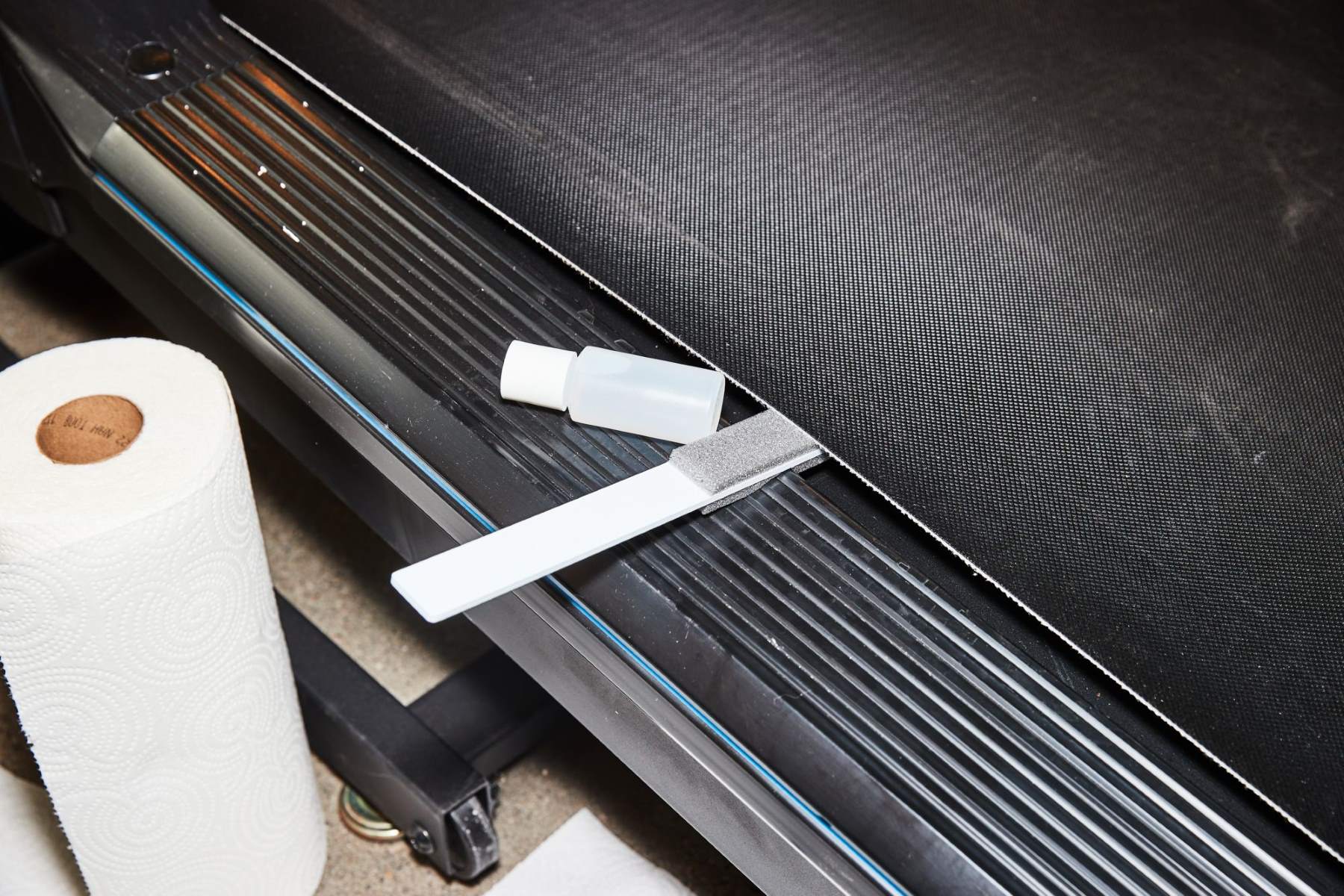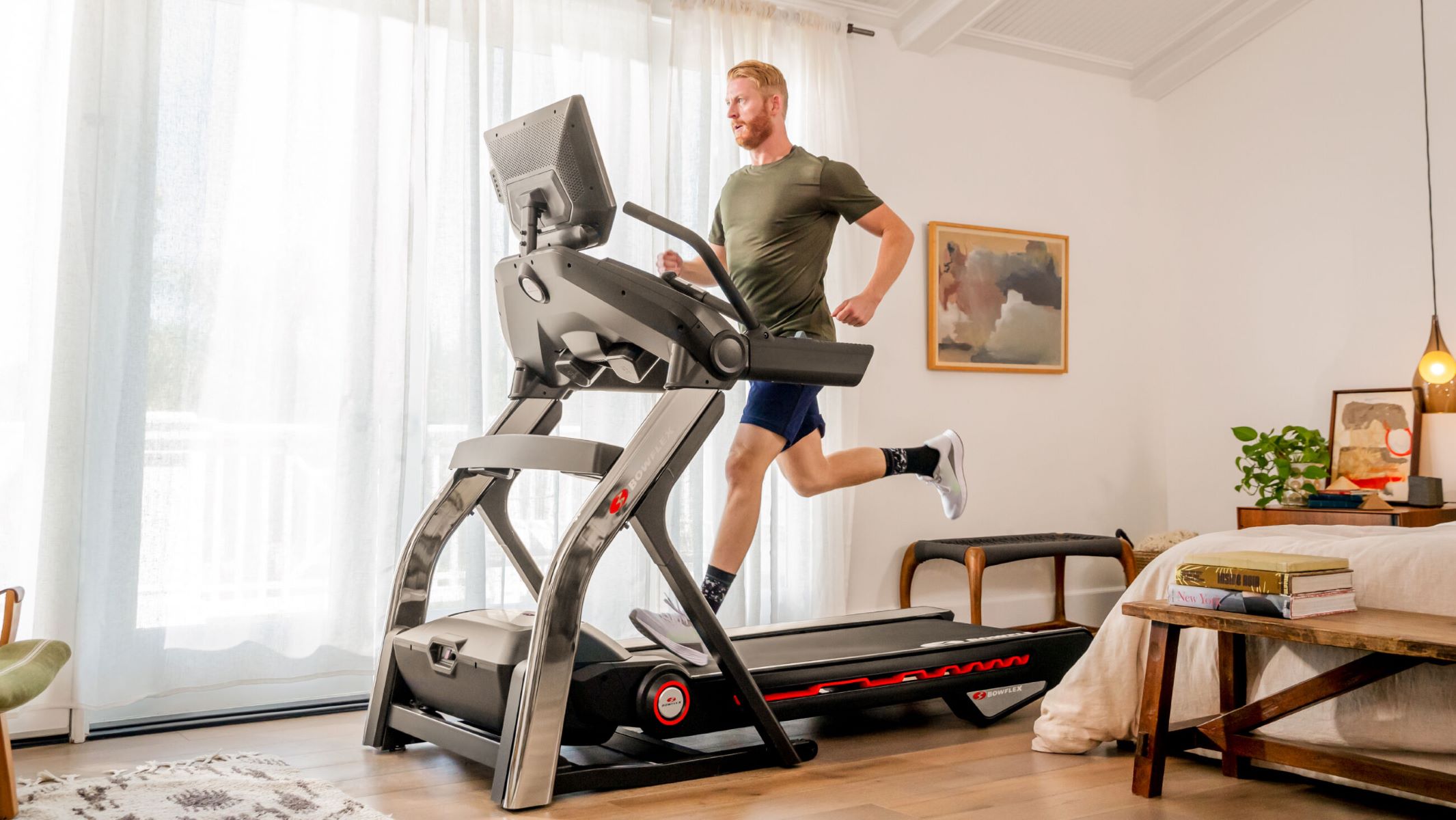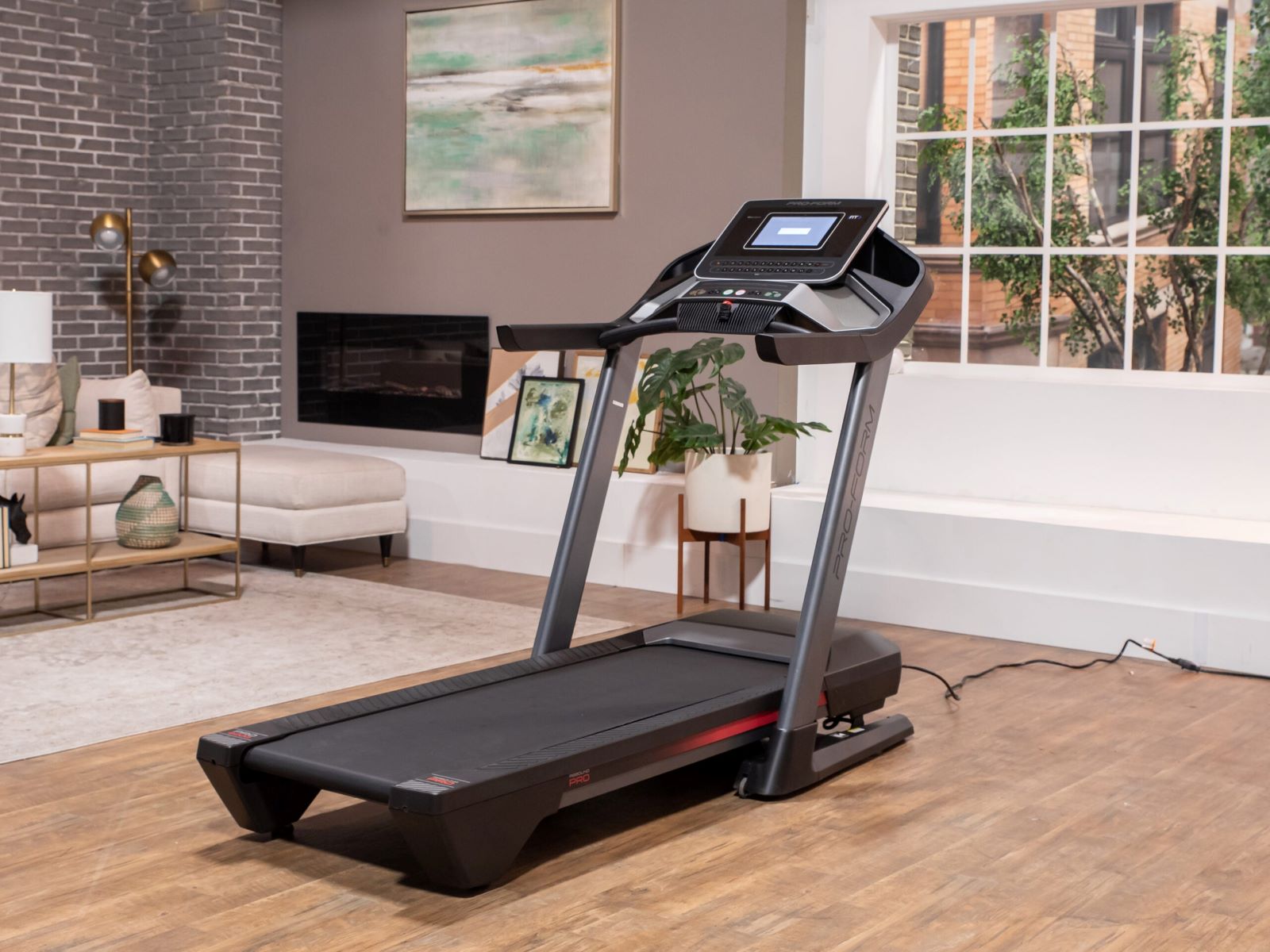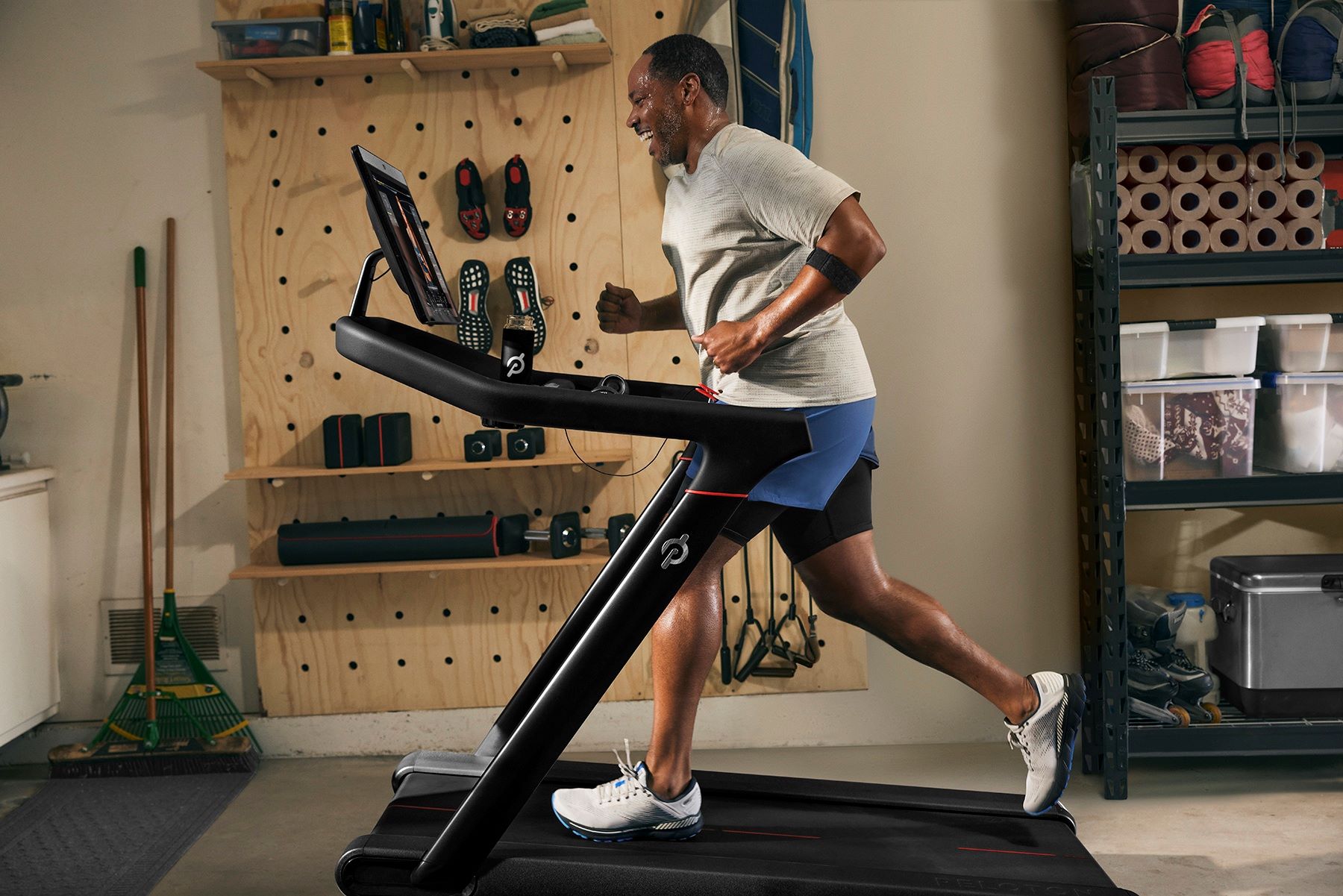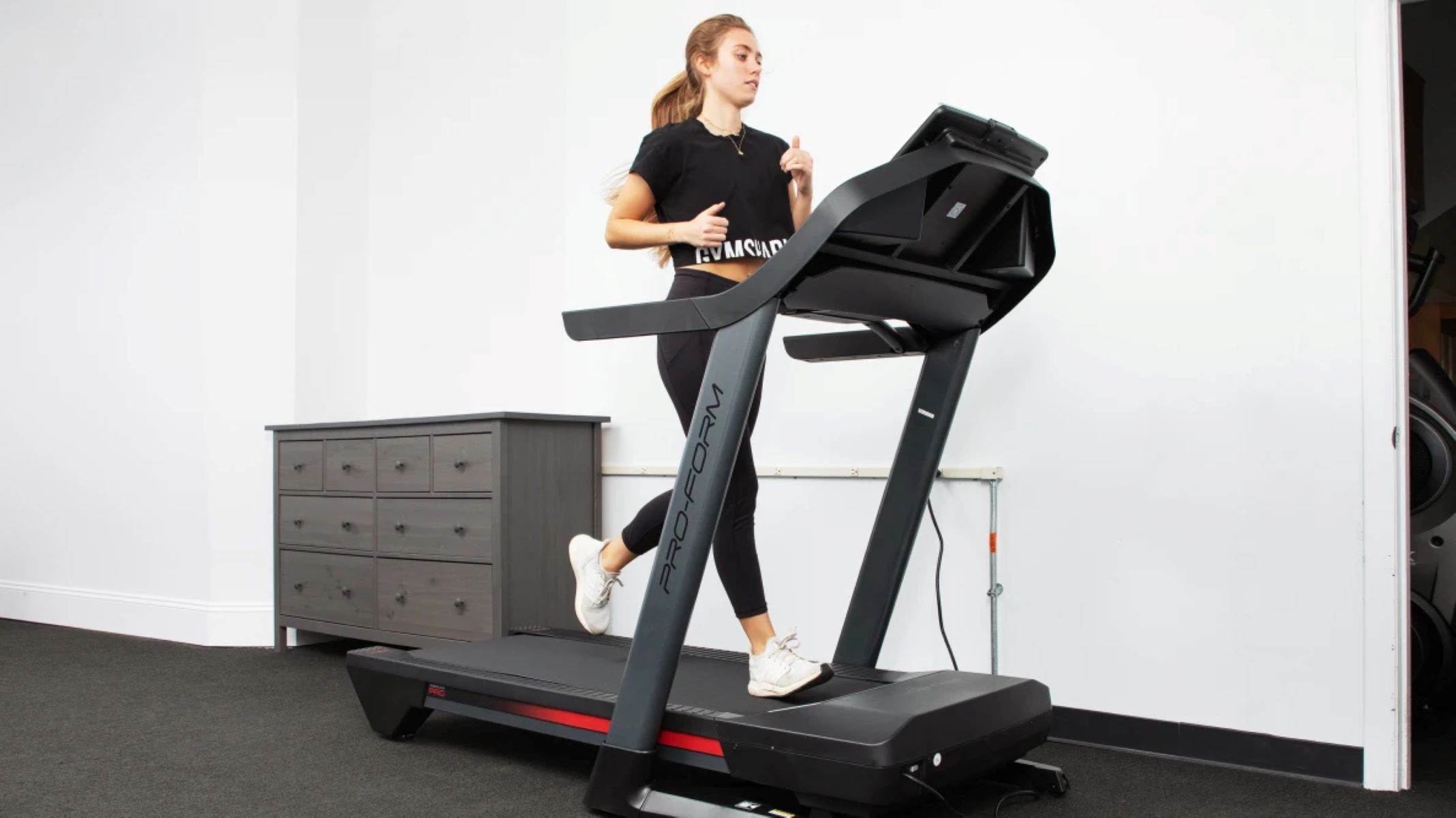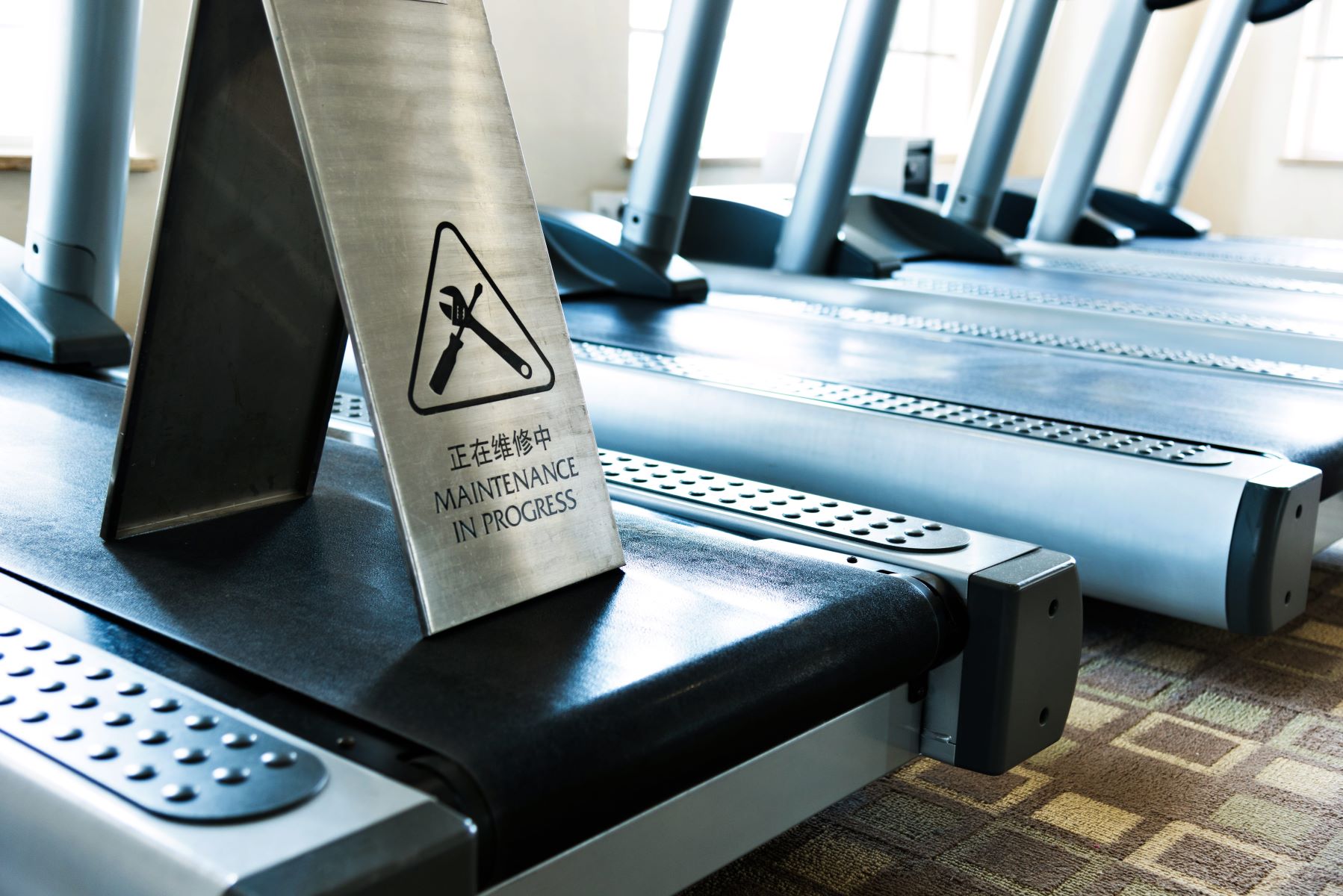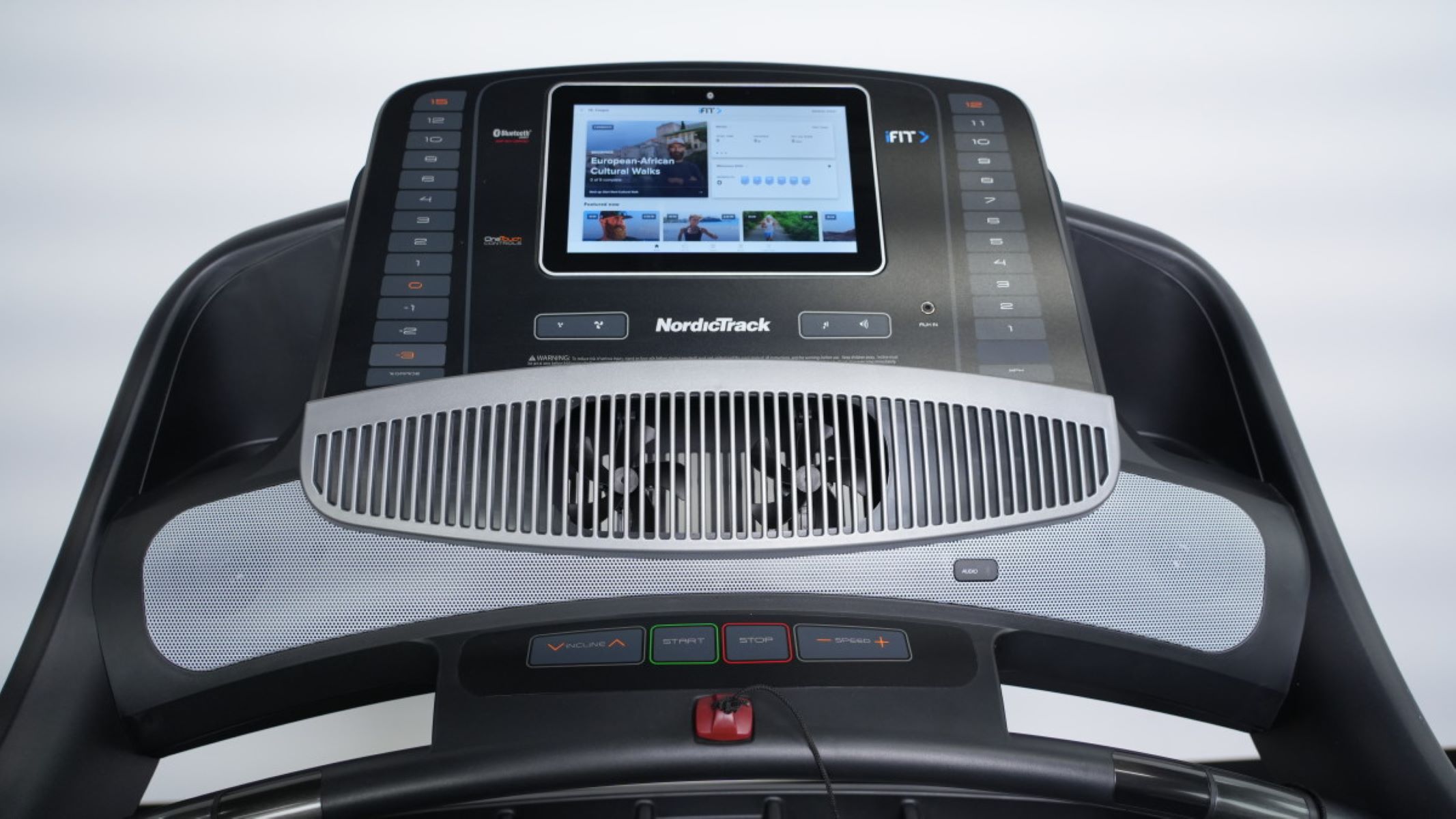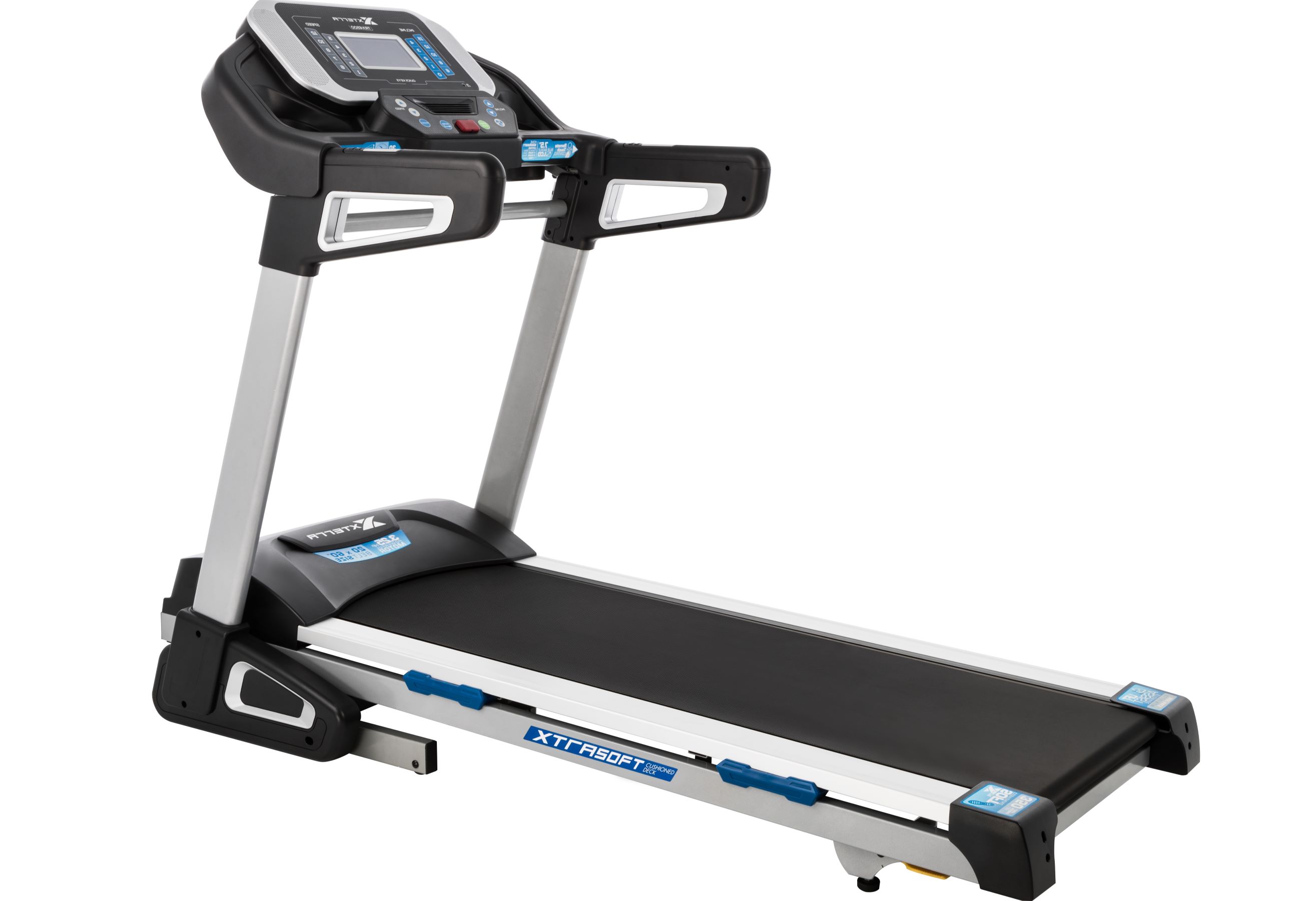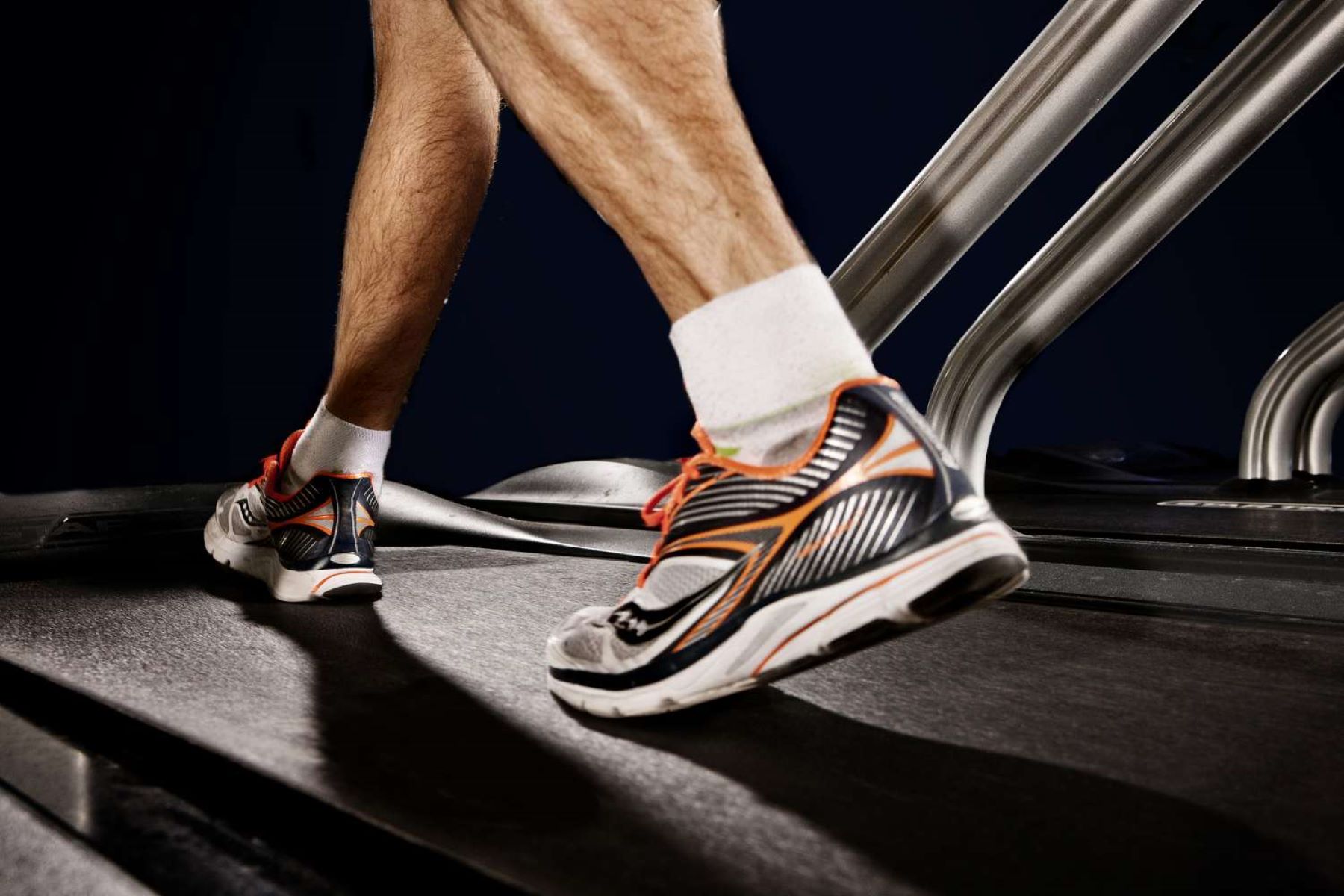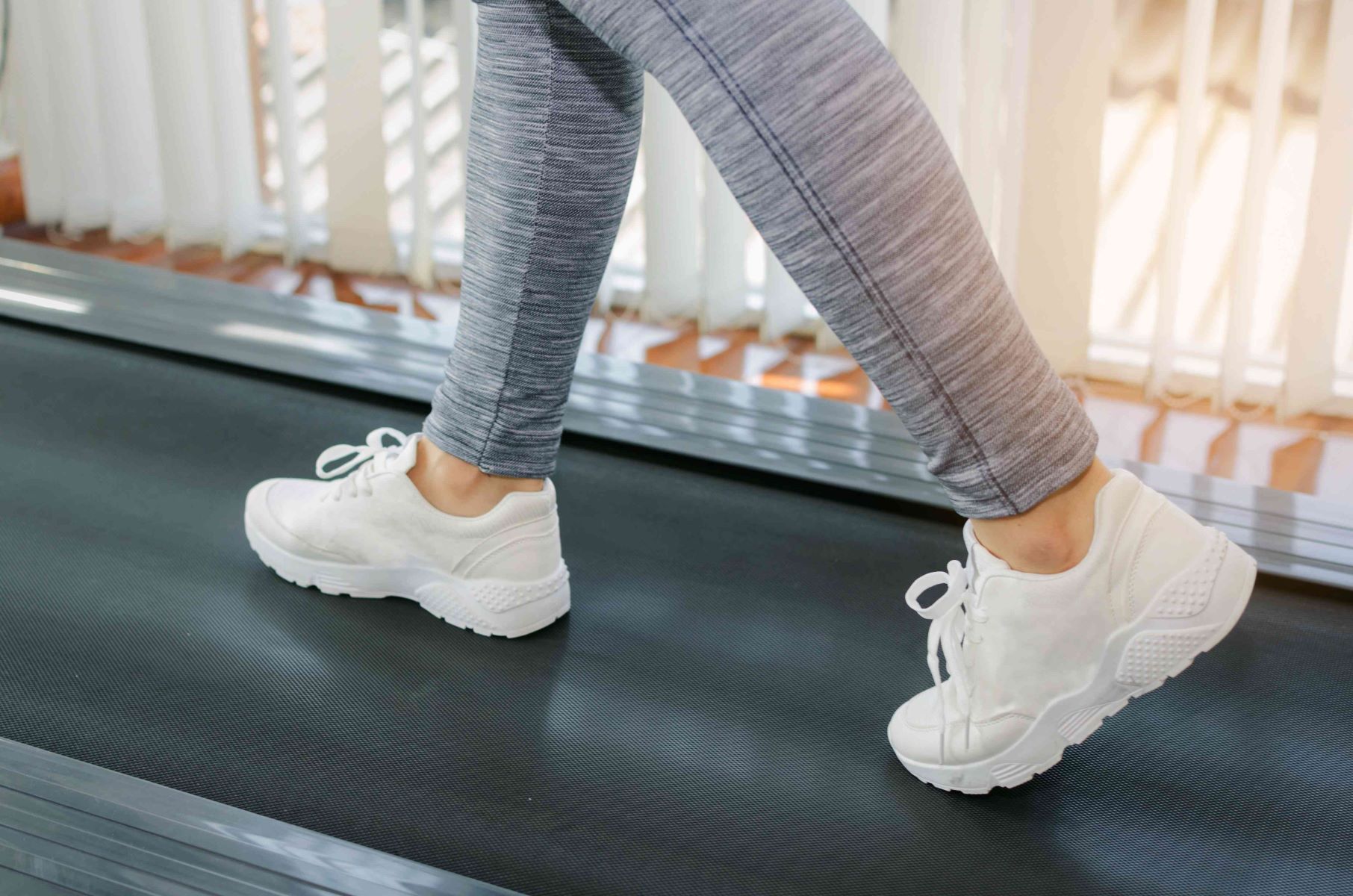

Featured
Why Does The Treadmill Belt Slip
Modified: January 2, 2024
"Featured article explaining why treadmill belts can slip and what you can do to fix this common problem. Get back to your workout with ease."
Introduction
Welcome to the world of fitness and exercise! If you’re a regular user of treadmill machines, you may have encountered a common issue – treadmill belt slippage. Nothing can be more frustrating than trying to get a good workout in, only to find that the belt keeps slipping underneath your feet. But don’t worry, you’re not alone in facing this challenge.
Treadmill belt slippage occurs when the running belt on the treadmill fails to grip the deck and keeps moving faster or slower than your intended pace. This not only disrupts your workout but also poses safety risks if the belt slips suddenly.
Understanding the causes of treadmill belt slippage is crucial in order to address and prevent this issue. In this article, we will explore the common reasons why treadmill belts slip, as well as provide helpful tips on how to prevent it from happening in the first place.
So, if you’re tired of constantly dealing with a slippery treadmill belt, read on to discover the root causes and effective solutions. By the end of this article, you’ll have a clear understanding of how to keep your treadmill running smoothly and efficiently.
Understanding Treadmill Belt Slippage
Treadmill belt slippage occurs when the running belt fails to maintain its grip on the deck, causing it to move inconsistently with your intended pace. This can be a frustrating and potentially dangerous issue, as it disrupts your workout and increases the risk of accidents or injuries. Understanding how and why treadmill belts slip is essential in order to address the problem effectively.
One of the main reasons treadmill belts slip is due to insufficient tension or a loose belt. If the tension is too low, the belt may not properly grip the deck, causing it to slip. On the other hand, if the belt is too loose, it can create a jerky or inconsistent movement.
Another common cause of treadmill belt slippage is a worn-out belt or deck. Over time, the constant friction and pressure from running can wear down the belt and deck, reducing their ability to maintain a proper grip. This can result in the belt slipping while in use.
Lack of lubrication is also a significant factor in treadmill belt slippage. Without proper lubrication, the belt and deck can generate excessive friction, leading to diminished traction and increased slippage. Regular lubrication is essential for maintaining optimal performance and preventing belt slippage.
Furthermore, an uneven treadmill surface can contribute to belt slippage. If the floor or surface where the treadmill is placed is not level, it can impact the belt’s ability to grip the deck consistently. This can result in the belt slipping on one side or moving at an angle.
Faulty drive motors or pulleys can also cause treadmill belt slippage. If the motor or pulley system is not functioning properly, it can affect the belt’s movement and lead to slippage. Mechanical issues such as loose or damaged parts can disrupt the belt’s grip and result in inconsistent movement.
By understanding the various causes of treadmill belt slippage, you can take the necessary steps to prevent and address this issue. In the next section of this article, we will discuss effective measures and tips to help you minimize belt slippage and ensure a smooth, safe, and enjoyable exercise experience.
Common Causes of Treadmill Belt Slippage
There are several common causes that can contribute to treadmill belt slippage. Understanding these factors can help you diagnose and address the issue effectively. Let’s take a deeper look at the main causes of treadmill belt slippage:
- Insufficient Tension or Loose Belt: One of the primary causes of belt slippage is insufficient tension or a loose belt. If the belt is not tightened properly, it may fail to grip the deck, resulting in slippage. Regularly checking and adjusting the belt tension is crucial to maintaining optimal performance.
- Worn Out Belt or Deck: Over time, the constant friction and pressure on the belt can cause it to wear out. Similarly, the deck can also become worn, reducing the gripping surface. A worn-out belt or deck significantly increases the chance of belt slippage during workouts.
- Lack of Lubrication: Proper lubrication is essential for smooth and consistent belt movement. Without regular lubrication, the friction between the belt and deck increases, leading to decreased grip and belt slippage. Be sure to follow the manufacturer’s recommendations for lubrication frequency and use a suitable lubricant for your treadmill.
- Uneven Treadmill Surface: If the surface under your treadmill is not level, it can affect the belt’s grip and cause slippage. An uneven surface can create an imbalance in the belt’s movement, leading to inconsistent performance. Make sure to place your treadmill on a leveled surface to minimize any potential slippage.
- Faulty Drive Motor or Pulley: Mechanical issues within the treadmill’s drive system, such as a faulty motor or pulley, can contribute to belt slippage. Loose or damaged parts in the motor or pulley system can disrupt the belt’s movement and compromise its grip on the deck.
Identifying the specific cause of belt slippage on your treadmill is the first step in resolving the issue. By addressing these common causes, you can take appropriate measures to prevent belt slippage and ensure a safe and efficient workout experience.
Insufficient Tension or Loose Belt
One of the primary causes of treadmill belt slippage is insufficient tension or a loose belt. If the belt on your treadmill is not tightened properly, it will fail to grip the deck effectively, resulting in slippage during your workout.
When the belt is too loose, it can create a jerky or inconsistent movement, making it challenging to maintain a steady pace. This can not only disrupt your exercise routine but also increase the risk of accidents or injuries.
To ensure sufficient tension and avoid a loose belt, it is essential to regularly check and adjust the belt tension on your treadmill. Most treadmills have an easy-to-use adjustment feature that allows you to tighten or loosen the belt as needed.
To check the tension of the belt, start by turning the treadmill off. Place your foot in the middle of the belt and lift it up. A properly tensioned belt should lift around 3 inches without straining. If the belt feels loose or saggy, it’s a clear sign that you need to adjust the tension.
To tighten the belt, refer to your treadmill’s user manual for specific instructions. Typically, you will need to locate the belt adjustment bolts at the rear end of the treadmill. Using a wrench or Allen key, turn the adjustment bolts clockwise in small increments to achieve the desired tension. Be careful not to overtighten the belt, as this can cause damage to the motor or other components.
Regularly checking and adjusting the belt tension will help ensure that it remains at the optimal level, preventing slippage and providing a smooth and stable running surface. It is recommended to perform this check every few weeks or whenever you notice the belt slipping during your workouts.
In addition to adjusting the tension, make sure to inspect the belt for any signs of wear or damage. If you notice fraying, cracking, or significant wear on the belt, it may be time for a replacement. A worn-out belt not only increases the risk of slippage but also hampers the overall performance and safety of your treadmill.
By maintaining proper tension and addressing any belt wear or damage, you can minimize the risk of belt slippage and ensure a safer and more enjoyable workout experience on your treadmill.
Worn Out Belt or Deck
Another common cause of treadmill belt slippage is a worn-out belt or deck. Over time, the constant friction and pressure from running or walking on the treadmill can cause the belt and deck to wear down, leading to decreased grip and increased slippage.
To determine if your treadmill belt or deck is worn out, visually inspect the surface of the belt for any signs of wear, such as fraying, thinning, or cracking. Run your hand along the belt to feel for any unevenness or roughness. Additionally, check for any visible wear or damage to the deck, which is the platform beneath the belt.
If you notice significant wear or damage to the belt or deck, it’s important to take action to prevent further slippage and avoid potential safety hazards. In most cases, replacing the worn-out parts is necessary to restore the optimal functioning of your treadmill.
Replacing a treadmill belt or deck requires careful attention to detail and is best performed by following the manufacturer’s instructions or seeking professional assistance. Be sure to consult your treadmill’s user manual or contact the manufacturer for guidance on the specific replacement process.
When replacing the belt, it’s recommended to choose a high-quality replacement that matches the specifications of your treadmill model. This ensures proper fit, durability, and performance. Additionally, consider lubricating the new belt according to the manufacturer’s guidelines to maintain optimal traction and reduce friction.
Regular maintenance and proactive measures like monitoring and replacing worn-out parts can significantly reduce the risk of belt slippage and extend the lifespan of your treadmill. It’s important to prioritize the safety and functionality of your equipment to ensure a smooth and enjoyable workout experience.
Remember, an investment in maintaining and replacing worn-out treadmill parts is an investment in the longevity and effectiveness of your exercise routine. By addressing worn-out belts or decks promptly, you can avoid potential accidents, increase your treadmill’s performance, and achieve your fitness goals with ease.
Lack of Lubrication
Lubrication plays a crucial role in preventing treadmill belt slippage. Without proper lubrication, the belt and deck can generate excessive friction, which leads to diminished traction and increased slippage during workouts.
Proper lubrication minimizes the friction between the belt and deck, allowing them to glide smoothly and maintain a consistent grip. It also helps reduce the wear and tear on the belt and deck, extending their lifespan and improving overall treadmill performance.
Every treadmill model has specific lubrication requirements, so it’s essential to refer to the manufacturer’s recommendations for the appropriate lubricant and frequency of application. Some treadmills come with a pre-lubricated belt, while others require manual lubrication.
When lubricating your treadmill, ensure that you use a lubricant specifically designed for treadmill belts and decks. Using the wrong type of lubricant or over-lubricating can create a slippery surface, increasing the risk of falls or accidents. It’s best to follow the manufacturer’s guidelines closely to achieve the optimal lubrication balance.
The lubrication process typically involves lifting the treadmill belt and applying the lubricant evenly along the deck. Use a cloth or applicator provided with the lubricant to spread it thoroughly across the deck. Be sure to follow any additional instructions provided by the manufacturer to ensure proper lubrication.
Regularly monitor the condition of the lubricant on your treadmill belt and deck. Over time, the lubricant can wear off or become less effective, especially with frequent use. As a general guideline, it’s recommended to lubricate your treadmill every three to six months, or as advised by the manufacturer.
By maintaining proper lubrication on your treadmill, you can significantly reduce belt slippage and ensure smooth and consistent belt movement. This not only enhances your workout experience but also prolongs the life of your treadmill by reducing the strain and friction on its components.
Remember, proper lubrication is a critical aspect of treadmill maintenance that should not be overlooked. By providing the right level of lubrication, you can prevent belt slippage, minimize wear and tear, and maximize the performance and longevity of your treadmill.
Uneven Treadmill Surface
An uneven treadmill surface can contribute to belt slippage during your workouts. If the floor or surface where your treadmill is placed is not level, it can impact the belt’s ability to grip the deck consistently, leading to slippage and an unstable running experience.
When the treadmill is placed on an uneven surface, it can create an imbalance in the belt’s movement. This can cause the belt to slip on one side or lead to an angled running surface, making it difficult to maintain a steady pace and potentially increasing the risk of tripping or falling.
To ensure a level surface for your treadmill, start by checking the legs or leveling mechanisms on the bottom of the machine. Many treadmills come with adjustable leveling feet that allow you to raise or lower specific corners to achieve balance.
Use a leveler tool to determine if the treadmill is sitting evenly. Place the leveler on different parts of the machine, such as the deck or console, to identify any discrepancies. Adjust the leveling feet as needed until the treadmill is perfectly level.
In some cases, you may need to place a mat or plywood board under the treadmill to create a level surface. This can help compensate for any irregularities in the floor and ensure that the treadmill sits evenly.
By maintaining a level surface for your treadmill, you can prevent belt slippage and create a safer and more comfortable workout environment. It allows the belt to maintain consistent contact with the deck, promoting smooth and stable movement.
Regularly check the levelness of your treadmill and make adjustments as necessary. This simple step can significantly enhance your treadmill experience, provide a more effective workout, and minimize the risk of belt slippage.
Remember, a stable and level surface is essential for the proper functioning of your treadmill. Take the time to ensure that your treadmill is placed on a level footing to prevent belt slippage and enjoy a smooth and secure workout session.
Faulty Drive Motor or Pulley
A faulty drive motor or pulley in your treadmill can contribute to belt slippage. The drive motor and pulley system are responsible for powering the treadmill belt, and any issues with these components can disrupt the belt’s movement and compromise its grip on the deck.
If the drive motor is malfunctioning or encountering problems, it may not be able to produce the necessary power to maintain consistent belt movement. This can result in belt slippage during your workout. Similarly, if the pulley system is loose or damaged, it can cause the belt to slip or move unevenly.
If you suspect that a faulty drive motor or pulley is the cause of belt slippage, it’s advisable to consult a professional technician or contact the manufacturer for assistance. They can accurately diagnose the issue and determine the best course of action to rectify the problem.
In some cases, the drive motor or pulley might need to be repaired or replaced. Attempting to fix or replace these components without proper knowledge or expertise can lead to further damage to your treadmill. It is recommended to seek professional help to ensure the proper functioning of your treadmill and eliminate belt slippage.
Regular maintenance and periodic inspection of the drive system can help identify any potential issues early on. Keep an eye out for any unusual noises, vibrations, or changes in belt movement, as these can be indicators of a problem with the drive motor or pulley.
By addressing any issues with the drive motor or pulley promptly, you can restore the proper functioning of your treadmill and eliminate belt slippage. This will ensure a smooth and consistent workout experience, providing you with the desired results and reducing the risk of injury.
Remember, the drive motor and pulley are essential components that power the treadmill belt. If you suspect any problems with these components, it’s best to seek professional assistance to accurately diagnose and resolve the issues, allowing you to enjoy a safe and effective workout on your treadmill.
Tips for Preventing Treadmill Belt Slippage
Dealing with treadmill belt slippage can be frustrating and disruptive to your workout routine. Fortunately, there are several measures you can take to prevent belt slippage and ensure a smooth and safe exercise experience. Here are some useful tips:
- Regularly check and adjust belt tension: Maintain proper tension in your treadmill belt by regularly checking and adjusting it. Follow the manufacturer’s guidelines for proper tension levels, and tighten or loosen the belt as needed to ensure it grips the deck securely.
- Replace worn-out belt or deck: Inspect the treadmill belt and deck regularly for signs of wear, such as fraying or cracking. If you notice significant wear, it’s time to replace the worn-out parts to restore optimal grip and prevent slippage.
- Properly lubricate the treadmill belt: Regular lubrication is crucial to reduce friction between the belt and deck. Follow the manufacturer’s recommendations for lubrication frequency and use a suitable lubricant designed specifically for treadmill belts. This helps maintain optimal traction and reduces the likelihood of belt slippage.
- Maintain a level treadmill surface: Ensure that your treadmill is placed on a level surface to promote stable and consistent belt movement. Use a leveler tool to check for any unevenness, and adjust the leveling feet or use a mat or plywood to create a flat surface if necessary.
- Inspect and repair drive motor or pulley: Regularly inspect the drive motor and pulley system for any signs of damage or malfunction. Strange noises or belt irregularities may indicate a problem with these components. If necessary, consult a professional technician to repair or replace any faulty parts.
By implementing these preventive measures, you can significantly reduce the risk of treadmill belt slippage and ensure a smoother and safer workout experience. Regular inspection, maintenance, and timely repairs will help extend the lifespan of your treadmill, improve its performance, and contribute to your overall fitness goals.
Regularly check and adjust belt tension
Ensuring proper tension in your treadmill belt is essential to prevent belt slippage. Over time, the tension of the belt can become loose or inconsistent, causing it to slip during your workouts. Regularly checking and adjusting the belt tension will help maintain optimal grip and reduce the risk of slippage.
Start by turning off your treadmill and locating the belt tension adjustment bolts, usually found at the rear end of the machine. Using the appropriate tools, such as a wrench or Allen key, make small adjustments as needed to tighten or loosen the belt.
To check the tension of the belt, place your foot in the middle of the belt and lift it up. A properly tensioned belt should lift approximately 2-3 inches without undue resistance. If the belt is sagging or feels loose, it is a clear indicator that it needs to be tightened.
Take caution not to overtighten the belt, as this can strain the motor and other components of your treadmill. Follow the manufacturer’s guidelines for the recommended tension level, as each treadmill model may have specific requirements.
Regularly check the tension of your treadmill belt, especially if you notice any slippage or inconsistent movement. It is recommended to perform this check every few weeks or whenever you feel that the belt requires adjustment.
Properly tensioned belts provide a stable and secure surface for your workouts. They ensure optimal grip, allowing you to run or walk with confidence and reducing the risk of accidents or injuries.
Remember, maintaining the right tension in your treadmill belt is crucial to prevent slippage and ensure a smooth and effective workout. Regular checks and adjustments will help you optimize your treadmill’s performance and enhance your overall exercise experience.
Replace worn-out belt or deck
Worn-out treadmill belts and decks can significantly contribute to belt slippage. Over time, the continuous friction and pressure from running or walking on the treadmill can cause the belt and deck to deteriorate, leading to decreased traction and increased slippage during your workouts. It is important to regularly inspect and replace these worn-out parts to maintain the efficiency and safety of your treadmill.
When checking the belt, look for signs of wear, such as fraying, cracking, or thinning. Additionally, run your hand along the surface of the belt to feel for any unevenness or roughness. If you notice significant wear or damage, it is time to replace the belt.
The deck, which is the platform beneath the belt, also experiences wear over time. Inspect the deck for any visible signs of wear, such as grooves or indentations. A worn-out deck can significantly impact the performance and grip of the belt, leading to slippage.
Replacing the belt and deck is a task that should be approached with care. Follow the manufacturer’s instructions or consult a professional if you are unsure about the replacement process. They can guide you on the specific steps required to replace these parts effectively.
When choosing a replacement belt, ensure that it is compatible with your treadmill model and meets the manufacturer’s specifications. Opt for high-quality belts that are durable and designed to provide optimal grip and performance.
Replacing worn-out parts is crucial not only to prevent belt slippage but also to maximize the lifespan of your treadmill. It ensures that the belt maintains a consistent grip on the deck, allowing for smooth and safe workouts without any interruptions.
Regular maintenance, including the timely replacement of worn-out belts and decks, will help you maintain the performance and functionality of your treadmill. By investing in these replacements, you can enjoy a more efficient and enjoyable exercise experience while minimizing the risk of belt slippage.
Properly lubricate the treadmill belt
Proper lubrication of the treadmill belt is crucial to prevent belt slippage and maintain optimal performance. Lubrication helps reduce friction between the belt and deck, allowing for smooth and consistent movement. Without sufficient lubrication, the belt can become dry and generate excessive heat, leading to decreased grip and increased slippage.
Refer to your treadmill’s user manual or manufacturer’s recommendations for the appropriate lubricant to use. Different treadmills may require different types of lubricants, so it’s important to follow the guidelines specific to your model.
Before applying lubricant, ensure that the treadmill is turned off and unplugged. Then, lift the belt slightly to access the deck underneath. Apply the lubricant evenly across the deck, following the recommended amount specified by the manufacturer.
Use a cloth or applicator provided with the lubricant to spread it across the deck. Perform a back and forth motion to ensure that the lubricant is properly distributed. Avoid applying excessive amounts of lubricant, as it can lead to a slippery surface and compromise your safety while using the treadmill.
After lubricating the treadmill, run it at a slow speed for a few minutes to allow the lubricant to spread evenly across the belt and deck. This helps to ensure that the lubrication reaches all the necessary areas and provides optimal performance.
The frequency of lubrication will depend on the usage and model of your treadmill. Generally, it is recommended to lubricate the treadmill every three to six months. However, some high-end models may have self-lubricating features that reduce the frequency of manual lubrication. Check your treadmill’s manual for specific recommendations.
Regularly lubricating your treadmill belt will help maintain its longevity and reduce the risk of belt slippage. It is a simple yet vital step in treadmill maintenance that can greatly impact the overall performance and smoothness of your workouts.
Remember, proper lubrication minimizes friction, reduces wear and tear, and ensures optimal grip. By following the manufacturer’s instructions and lubricating your treadmill belt regularly, you can prevent belt slippage and enjoy a seamless and safe workout experience.
Maintain a level treadmill surface
Keeping your treadmill on a level surface is crucial to prevent belt slippage and ensure a stable and safe workout environment. When the treadmill is placed on an uneven surface, it can cause the belt to move inconsistently, leading to slippage and potentially increasing the risk of accidents.
Start by ensuring that the area where you plan to use your treadmill is level. Use a leveler tool to check the surface, placing it on different parts of the floor where the treadmill will be positioned. If you notice any unevenness, it’s important to address it before using the treadmill.
If your treadmill has adjustable leveling feet, adjust them as necessary to even out the machine. Some treadmills also come with built-in leveling systems that allow you to raise or lower specific corners of the machine to achieve balance.
In cases where the floor itself is uneven, you can use a mat or a piece of plywood to create a level surface for your treadmill. Place the mat or plywood underneath the treadmill to compensate for any irregularities in the floor, ensuring the treadmill sits evenly and securely.
It’s important to periodically check the levelness of your treadmill while in use. Over time, slight shifts may occur, causing the machine to become unbalanced. Use a leveler tool to verify that the treadmill remains level and make any necessary adjustments as needed.
Maintaining a level surface for your treadmill ensures that the belt remains in constant contact with the deck, providing consistent grip and preventing slippage. It also promotes a more comfortable and stable running or walking experience.
A level treadmill surface not only reduces the risk of belt slippage but also helps to prevent unnecessary strain on the treadmill’s frame and components. It ensures that the machine operates at its optimal efficiency, enhancing the longevity and functionality of your treadmill.
Remember, maintaining a level surface for your treadmill is essential for safe and effective workouts. Take the time to ensure that the surface where you place your treadmill is even, and regularly check for any shifts or imbalances. By doing so, you can prevent belt slippage and enjoy a smoother and more enjoyable exercise experience.
Inspect and repair drive motor or pulley
Regular inspection of the drive motor and pulley system in your treadmill is essential to prevent belt slippage. The drive motor and pulleys are responsible for powering the treadmill belt, and any issues with these components can result in belt movement inconsistencies and increased slippage.
Keep an eye out for any signs of trouble, such as unusual noises, vibrations, or changes in the belt’s movement. These may indicate a problem with the drive motor or pulley system. If you suspect an issue, it is advisable to consult a professional technician or contact the manufacturer for assistance.
Repairing or replacing faulty drive motors or pulleys is a task best left to professionals who have the expertise and knowledge to handle the intricate mechanisms of your treadmill. Attempting to fix these components without proper understanding can lead to further damage or potential injury.
Regular maintenance and periodic inspection of the drive motor and pulley system can help identify any potential issues early on. Regularly lubricate the motor and pulleys as recommended by the manufacturer to ensure smooth and efficient operation.
During inspections, check for loose or damaged parts, and tighten or replace them as necessary. Pay attention to the drive belt as well, ensuring proper tension and alignment. Keep in mind that the drive belt is different from the treadmill belt—the drive belt connects the motor to the front roller, enabling the movement of the treadmill belt.
If you notice any significant problems with the drive motor or pulley system, it’s crucial to address them promptly. Ignoring or neglecting these issues can lead to more severe damage and potential safety hazards during your workouts.
By inspecting and repairing the drive motor and pulley system, you can restore the optimal functioning of your treadmill, minimize belt slippage, and ensure a smooth and consistent workout experience. This not only improves the performance of your treadmill but also contributes to your safety and overall enjoyment while using the machine.
Regular maintenance, including the inspection and repair of the drive motor and pulleys, will help prolong the lifespan of your treadmill and ensure that it continues to provide a reliable and efficient exercise platform for years to come.
Conclusion
Treadmill belt slippage is a common issue that can disrupt your workouts and pose safety risks. Understanding the causes and implementing preventive measures is crucial to overcome this problem and ensure a smooth and enjoyable treadmill experience.
Regularly checking and adjusting the belt tension, replacing worn-out belts or decks, properly lubricating the treadmill belt, maintaining a level surface, and inspecting and repairing the drive motor or pulley system are all important steps in preventing belt slippage.
By maintaining optimal belt tension, you can ensure a secure grip and consistent movement of the treadmill belt. Regularly inspecting and replacing worn-out belts or decks helps maintain traction and prevent slippage. Proper lubrication minimizes friction and reduces the risk of belt slippage. A level treadmill surface improves stability and reduces the chances of the belt slipping. Regular inspection and repair of the drive motor and pulley system ensures optimal performance and reduces the risk of belt slippage.
Remember, consistent maintenance and proactive measures will help prevent belt slippage, improve the functionality and safety of your treadmill, and enhance your overall workout experience. Whether you’re a seasoned runner or just starting your fitness journey, addressing and preventing belt slippage will go a long way in achieving your fitness goals in a safe and efficient manner.
So, take the time to implement these tips and regularly maintain your treadmill to ensure that belt slippage doesn’t hinder your progress. Get ready to enjoy seamless workouts and get the most out of your treadmill!
